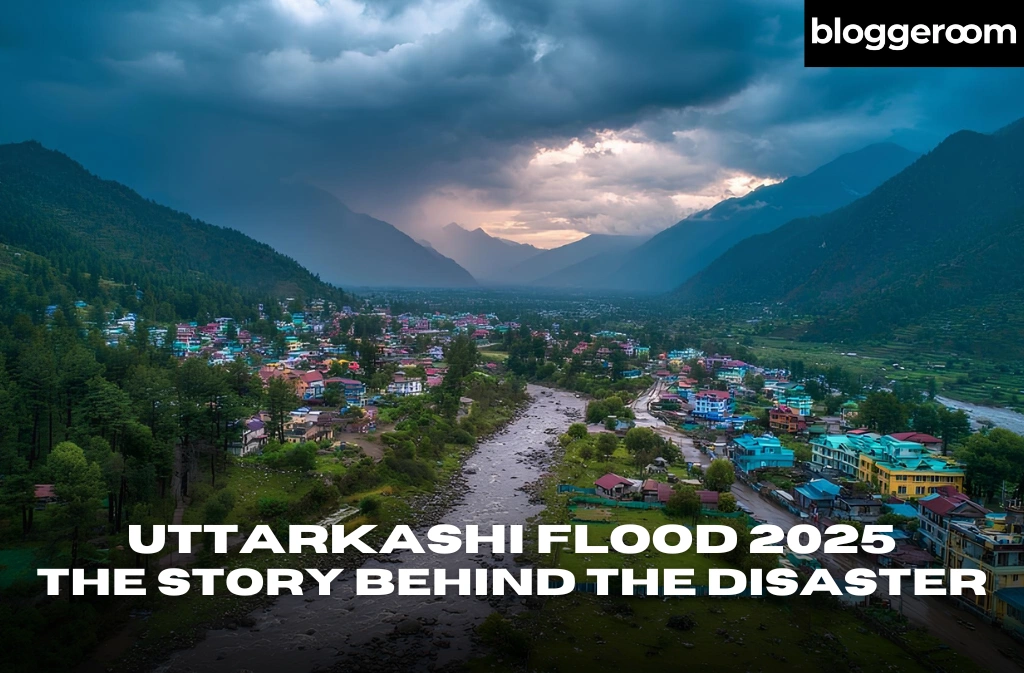Uttarkashi Flood 2025: The Story Behind the Disaster
Before dawn on August 5, 2025, the quiet rhythm of life in Dharali, a small village in the Himalayas, was shattered by flood. The gentle flow of the Bhagirathi River gave way to the thunder of water mixed with boulders and debris racing down from the heights. In only a few minutes, homes vanished, roads were torn apart, and shops lay in ruins. Rescue teams struggled through difficult terrain to reach those in danger, while anxious families searched for relatives who had not returned. For the people here, it felt like reliving the heartbreak of earlier disasters that had scarred the region.
Why the flood happened
Experts studying the incident believe it was caused by an intense and sudden release of water rather than days of continuous rain. This type of event can occur when a cloudburst drops a huge amount of rain in a short time, or when a glacial lake high in the mountains bursts its banks. The water races down narrow valleys, gathering soil, rocks, and tree trunks along the way. By the time it reaches villages like Dharali, it has the power to sweep away almost anything in its path.
When the river returned to its old path
Dharali sits on what geologists call an alluvial fan, a wide spread of gravel and silt left behind by rivers over centuries. Long ago, the river flowed in different directions across this fan. Over time, people built homes, markets, and guesthouses on parts of the old riverbed. When the floodwaters arrived, they naturally followed one of these earlier routes. The force of the water carved a new channel straight through populated areas, carrying away structures that stood in its way.
The role of land encroachment
Many locals and environmental experts have warned about the dangers of building on riverbeds in mountain towns. In Dharali, unplanned construction had crept into zones that should have remained clear for floodwaters. Several hotels and shops were built only steps from the river. Once the water changed course, these buildings were directly in the firing line. This is not just a problem in Uttarkashi; it is a pattern across much of the Himalayas where tourism and urban growth outpace safety planning.
Impact on religious and cultural sites
The region is famous for its temples and pilgrim routes. In earlier times, these places were visited mainly for prayer and community events. Over the years, some have been turned into commercial hubs. Certain temple premises and dharamshalas have become honeymoon destinations, while others have been used for late-night gatherings and alcohol consumption. These changes not only alter the cultural atmosphere but also put more people in harm’s way when disasters strike.
The situation draws strong comparisons to the Kedarnath tragedy of 2013, where extreme weather and human encroachment turned a sacred destination into the site of massive loss.
Conclusion
The lessons from this flood are clear. Mapping historic river channels, enforcing no-construction zones, and relocating high-risk settlements can reduce future tragedies. Installing early warning systems and running awareness campaigns will help communities prepare. Protecting the integrity of religious spaces and managing tourism in a way that respects the fragile environment can also make a difference.
In mountain landscapes like Uttarkashi, rivers will always seek their natural course. Whether people can adapt their plans to respect that reality will decide how often such tragedies repeat.







